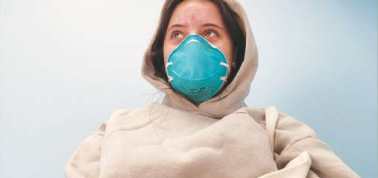Warmer weather brings an increase to allergies
Abrupt changes in temperature bring out unwanted symptoms
Pollen from flowers often results in symptoms like nasal congestion, sinus pressure, runny nose, itchy, watery eyes, scratchy throat and a cough.
As spring is approaching, so is the spread of germs and diseases. It is good to enjoy the spring season, but at the same time, be wary because along with spring comes warm weather which aids the growth of trees, flowers and weeds as well as the return of insects such as bees and mosquitos.
Spring is the number one season for allergies and diseases. According to the Asthma and Allergy Foundation of America, 50 million people in the United States are affected just by nasal allergies. In addition to nasal allergies, some other types promoted by the warm spring weather include sinusitis, asthma, bee stings and hay fever.
Allergies are comprised of symptoms such as congestion, sneezing, swelling and inflammation of the nasal passages and airways, irritation of the eyes, wheezing and more. All of these symptoms are caused by the spread of allergens, which are substances like pollen that cause the human body to have an allergic reaction.
Allergic diseases are the fifth leading chronic disease in the U.S. in people of all ages. About 30 percent of adults and 40 percent of children are affected by allergies. Unfortunately these statistics are increasing due to climate change and priming effect. Recent studies show that pollen levels gradually increase every year, resulting in an increase of seasonal allergies. Warmer winters can cause plants to release pollen earlier than usual, making the spring allergy season longer.
“For me, I tend to get hives when I get allergies, so everyday in the morning I take two pills of Benadryl to help my immune system fight germs,” junior Edgar Falla said. “When I actually get an allergic reaction, I take an additional two pills of Benedryl.”
In 2012, 11.1 million people were diagnosed with rhinitis and 24.2 million people were diagnosed with hay fever with 17.6 million being adults and 6.6 million of them being children. Stings from insects affect about five percent of the U.S population and at least 40 deaths occur yearly due to sting reactions.
In the spring, it is a good thing to stay inside because the outside is where people contract germs and allergies. Also getting a lot of sleep is good.
Additional ways of preventing allergies include: removing shoes when entering the house, showering immediately after being outside for an extended period of time, frequently vacuuming the house, washing out your sinuses daily, and sealing any cracks in the house. These methods help limit the amount of pollen as well as dust that is traced into the house, therefore limiting the amount of germs and pollen exposed.
Because allergies are impossible to get rid of, following these steps will help reduce the effects that pollen and other allergens have on your body.

Senior Katie Pope is the weekend editor of the A-Blast and this is her third year on staff. She was previously a staff writer, photographer, and photo...










